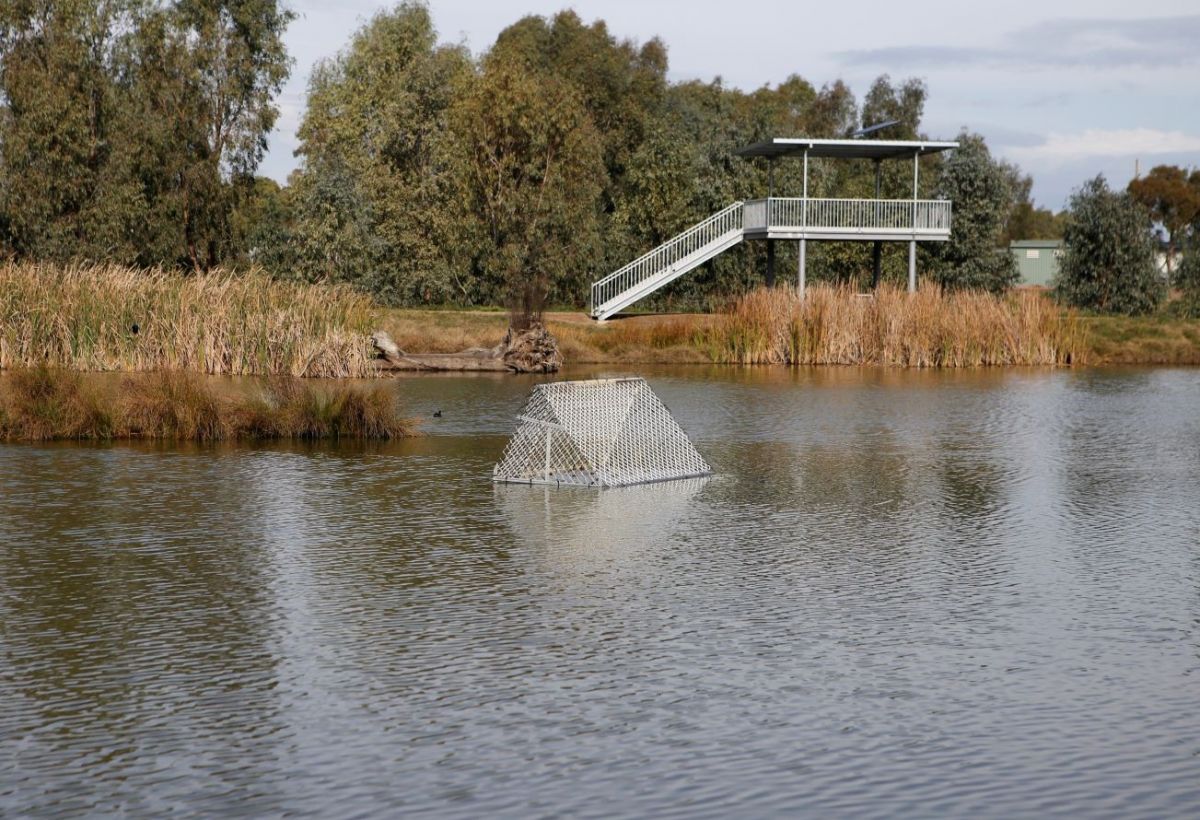To highlight World Environment Day, celebrated annually on 5 June, Wagga Wagga City Council worked with students and staff from Mount Austin High School on Monday to create and launch an artificial reed bed which will act as refuge for native wildlife at the Marrambidya Wetlands.
A reed bed is a buoyant framework that is anchored in one of the larger ponds in which native aquatic plant seedlings are planted.
Once established, the plants will provide leaf matter above the bed to support native birds, and roots growing below into the water will become an important habitat for fish and other micro-aquatic critters.

Wagga Wagga City Council Environmental Education Officer Christina Reid spoke of the benefits reed beds have in local ponds and lagoons to help support the environment.
“The native wildlife is under a lot of pressure from feral species, like foxes and cats, as well as unrestrained domestic animals. This kind of artificial island provides a place where those problems don’t exist and allows the birds to feel safe.
“It also helps to improve water quality as the plants act as a kind of water filter.
“However, while they are very young, the seedlings need to be protected from a range of birds that will eat them before they have time to mature, so they will be covered for the time being.” Ms Reid said.

The initiative coincided with World Environment Day which is celebrated annually on 5 June and encourages worldwide protection of the environment.
This year’s World Environment Day theme is #BeatPlasticPollution. With this theme in mind, the reed beds were constructed using upcycled security screen doors that were earmarked for landfill, rather than using bird netting which is a material consisting of plastic.
This method repurposes discarded materials and provides an alternative to the use of plastic.
Christina Reid said “Once the plants are established, the covers will be removed to give the local wildlife full access to the bed as a refuge.
“Hopefully this will happen in time for the breeding season in Spring, making it a potential nesting site.
“When the screens are removed from the reed beds they will be then re-used for other reed bed launches in the future.”

The engagement of local high school students in the initiative was a way of encouraging young people to be aware of the effects humans have on the environment and educate how we can support the rehabilitation of certain areas with simple solutions.
“The group of Mount Austin High School students were really enthusiastic and were involved at every stage in the planting of the seedlings, construction of the covers and also part of the decision-making process of where to anchor the reed bed. Ms Reid said.
“Some didn’t even mind getting a little muddy during the process.”

Council environmental officers will monitor the reed bed over the coming months to track the progress of the seedlings and will remove the cover when the plants reach a certain size.
